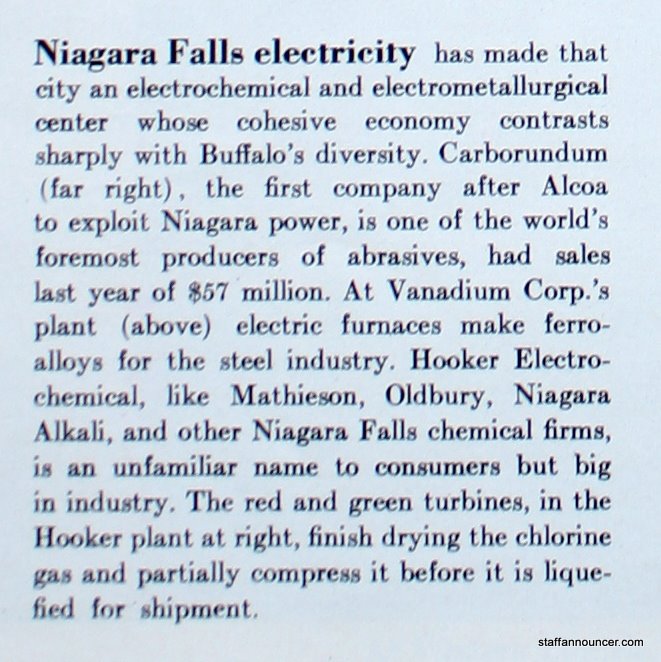 By Steve Cichon
By Steve Cichon
steve@buffalostories.com
@stevebuffalo
BUFFALO, NY – For the second half of the twentieth century, industry was on a steady decline in Buffalo– but it was really at it’s height when Fortune Magazine did a 10-page cover story on manufacturing and the industrial might of Buffalo and Western New York in its July 1951 issue.
 The Frederick Franck painting of Buffalo’s waterfront and downtown is great by itself, but the 27 photos of humming industry, almost half in color, and the rich accompanying text show the general sense of optimism about the future of the Niagara Frontier just after World War II.
The Frederick Franck painting of Buffalo’s waterfront and downtown is great by itself, but the 27 photos of humming industry, almost half in color, and the rich accompanying text show the general sense of optimism about the future of the Niagara Frontier just after World War II.
There’s even a reference to one corporation deciding to build a factory elsewhere because there just weren’t enough people looking for work in Buffalo.
Outside of a few big names, many of the mid-sized factories that came and went here are all but forgotten to the collective memory. Buffalonians often use “Bethlehem Steel and GM” as shorthand for the providers of thousands of blue collar jobs that were once plentiful in Western New York.
And while those two giants may have employed 30,000 men here at the height of it, there were more hard working Western New Yorkers punching a clock in dozens and hundreds of other smaller factories. Large corporations and mom and pop outfits.
As you’ll read below, ‘the 200,000 factory workers (of Buffalo) make everything from pig iron to pretzel benders.’ It also says that Buffalo is heavily Polish, mostly Catholic, and anti-Red.
Just like many of you, my own family history is reflected in these photos. My great-grandfather worked at Westinghouse, my grandfather scooped grain at General Mills. My father-in-law worked for Hooker Chemical.
Of course, the mere mention of Hooker is a reminder of what a truly mixed blessing the high paying jobs of dirty industry was in so many cases. Western New York became ground zero for one of the first disasters to call attention to the disposal of toxic waste. The the company was found negligent, along with the City of Niagara Falls, in what was to become known simply as ‘Love Canal.’
Enjoy this look at Buffalo’s “fascinating industrial kaleidoscope,’ and make note that the photographer on this story was Victor Jorgensen, more famed for his V-J day shot of a sailor and nurse kissing in Times Square.






































